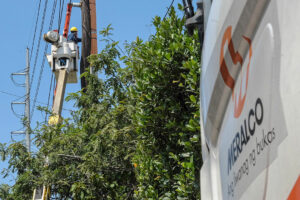Customers of Manila Electric Co. (Meralco) face higher bills as the power distributor is set to raise rates for February due to higher generation charge.
The overall rate will climb by P0.2834 per kilowatt-hour (kWh) to PHP 12.0262 per kWh in February from PHP 11.7428 per kWh in January, the company said in a statement on Tuesday.
This will translate to an upward adjustment of around PHP 57 in the total electricity bill of residential customers with a consumption of 200 kWh. Those consuming 300 kWh, 400 kWh and 500 kWh will have to pay an additional PHP 85, PHP 114 and PHP 144, respectively, this month.
Meralco attributed the increase in the overall electricity rate to the generation charge, which rose by P0.3845 per kWh due to higher costs from independent power producers (IPP) and power supply agreements (PSA).
IPP charges increased by PHP 0.8355 per kWh due to lower average plant dispatch, a weaker peso and higher liquefied natural gas terminal fees imposed by First Gas Sta. Rita and Sta. Lorenzo.
Charges from the PSAs also climbed by PHP 0.0837 per kWh.
Meralco said the peso depreciation affected 97% of IPP costs and 61% PSA costs that were dollar-denominated.
The local unit closed at PHP 58.365 a dollar on Jan. 31, weakening by 52 centavos from its PHP 57.845 finish on Dec. 27.
However, these higher costs were offset by the PHP 3.005-per-kWh drop in charges from the Wholesale Electricity Spot Market (WESM). The average and peak demand in the Luzon grid both declined, offsetting the impact of the increase in the average capacity on outage.
IPPs, PSAs and WESM accounted for 29%, 43% and 28%, respectively, of the power distributor’s total energy requirement for the period.
On other components, the transmission charge dipped by PHP 0.0013 per kWh as lower ancillary service charges mitigated the impact of the first of the three monthly collections for the recovery of costs of reserve market suppliers.
The Energy Regulatory Commission (ERC) directed the recovery of the remaining 70% of the reserve market settlement fees incurred in March last year. It will be billed to customers over three months beginning this month.
Taxes and other pass-through charges rose by PHP 0.1289 per kWh, reflecting the impact of higher ERC-approved universal charge for missionary areas of PHP 0.0171 per kWh.
“This month’s rates also reflected a one-time downward rate adjustment of P0.2264 per kWh and another downward adjustment of PHP 0.0023 per kWh, both related to regulatory reset fee adjustments, also ordered by the ERC,” Meralco said
The company reiterated that pass-through charges for generation and transmission are paid to the power suppliers and the grid operator, respectively, while taxes, universal charges, and Feed-in Tariff Allowance are all remitted to the government.
Meralco’s distribution charge has not moved at PHP 0.0360 per kWh since August 2022.
Proposed refund
Meanwhile, the power distributor is proposing to refund about PHP 19 billion in compliance with the ERC order in December that declared July 2022-June 2025 as a lapsed period that is part of its regulatory reset process.
Meralco wants to implement the refund over 36 months equivalent to PHP 0.19 per kWh for residential customers.
“We filed it early this February and we’re ready to implement it as soon as the ERC approves it. The earliest that we might be able to implement it might be March or April, but we will wait for the ERC directive,” Lawrence S. Fernandez, Meralco vice-president and head of utility economics, said at a briefing.
The company earlier said there was “no completed rate reset” during the period which was supposedly under the fifth regulatory period.
The total proposed amount covers the difference between Meralco’s actual weighted average tariff and the last approved rate of PHP 1.35 per kWh for Meralco from July 2022 to December 2024.
The rate reset process is usually a “forward-looking” exercise that requires the regulated entity to submit forecasted expenditures and proposed projects for the ERC to review and adjust rates.
Meralco’s controlling stakeholder, Beacon Electric Asset Holdings, Inc., is partly owned by PLDT Inc. Hastings Holdings, Inc., a unit of PLDT Beneficial Trust Fund subsidiary MediaQuest Holdings, Inc., has an interest in BusinessWorld through the Philippine Star Group, which it controls. – Sheldeen Joy Talavera, Reporter







 DOWNLOAD
DOWNLOAD

















